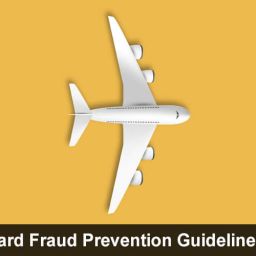
Chargebacks are one of the challenges that every merchant engaged in online business faces. Chargebacks can occur depending on various reasons like when the customer is not satisfied with the product. Unrecognized charges on customer’s credit card. Product not delivered on time etc. There are various chargeback prevention services or techniques that can be used to avoid chargebacks. In case a customer files a chargeback. Issuer bank will inquire about it and if the chargeback is proved to be true merchant not only loses full transaction amount but along with it. The merchant has to bear a chargeback fee.
Better is the chargeback management. More are the chances of the merchant to expand his business and generate good revenue. Businesses engaged in selling products online should be alert and cautious about the authenticity of the credit card being used to make the purchases. Stolen credit card number can be easily purchased from the local black market and can be used for purchasing expensive goods or services. By cross-checking the authenticity. The merchant can protect the reputation of his company and can also avoid chargebacks. According to latest studies. Problems faced by a merchant are listed below:
- US online merchants lost around $40 billion to fraud in 2016
- 1.5% of legitimate transactions rejected as a result of overzealous fraud prevention.
- Frauds attempts have increased to 33%
- Merchant loses around $2.40 over every $1 fraud
![]()
Email us anytime!
Email customer service 24/7
![]()
Call us anytime!
Reach customer care 24/7 at +1 (888) 901-8653
To reduce or stop chargebacks below is a 3-step plan that should be implemented especially by small business merchants:
1. Gateway Fraud Filters
To block or prevent transactions that may be fraudulent. A majority of payment gateways allow online merchants to set up some basic prevention rules. For instance. If the billing address does not match the address provided to the credit card company (AVS mismatch). It might be a case of stolen credit card.
- It is beneficial for the merchant who falls in low-risk category and has not experienced many frauds. As it does not cost him a single penny.
- Inadequate for the merchants facing moderate to high number of frauds.
- As rules are not flexible, may result in false declination.
2. Manual Reviews
This method is useful for merchants. Who fall in moderate to low-risk category. A merchant should have a team assigned to review purchases that fall into high-risk categories. Manual reviewing techniques include:
-
- Use of search engine to find variable data on the purchase
- Checking social media account
- Use of Google map to legitimate the shipping address
The transactions that fall into specific risk categories are:
-
- Transaction above a specific amount
- Mismatch of shipping and billing address
- Bulk orders
The advantage of using this method is accuracy as compare to simple gateway filters. Around 25% of transactions are reviewed in average by a merchant, out of which 70% – 80% are submitted for processing.
The disadvantages of this method are as following:
I. It is a very time-consuming method
II. The accuracy of results depends upon employee skills
III. Potential bottleneck during peak season
IV. Risks involved with employee resignation
V. Limited tools available for research
3. Prevention Solution
There are a large number of companies (Third party fraud prevention companies) that control fraud prevention technology to minimize fraud liabilities. Below is the list of some of the fraud prevention techniques:
- IP Piercing
- Geolocation
- Device ID
- Global Fraud Blacklist
Depending upon the merchant’s category and requirement. The list of solutions varies from basic to full-service solutions. That influence machine learning to give respond and notify the merchant of any fraudulent chargebacks as a result of a decision made by the merchant.
Advantages:
i. Effective against fighting fraud
ii. Eliminates the need for manual review
iii. Allows merchant to pre-determine fraud costs.
iv. Helps in acceptance of more orders than usual
v. Fewer men power required to accept the order
Disadvantages:
i. Requires experts for setup and maintenance
ii. Solutions can cost more
This solution is recommended for merchants who fall into the high-risk category. Small businesses who want to minimize resources engage in fraud prevention so that it can be used to increase sales and expansion.





